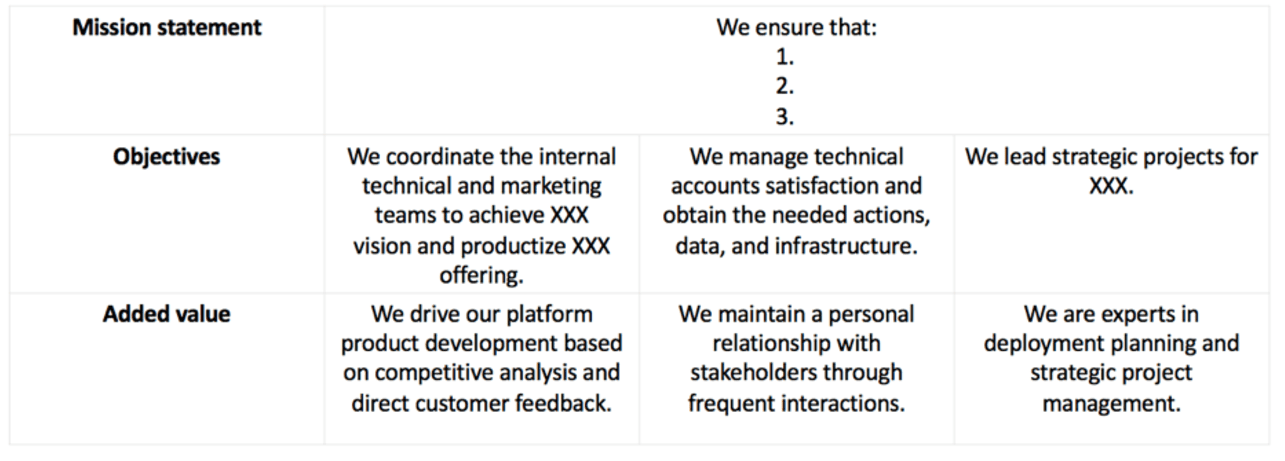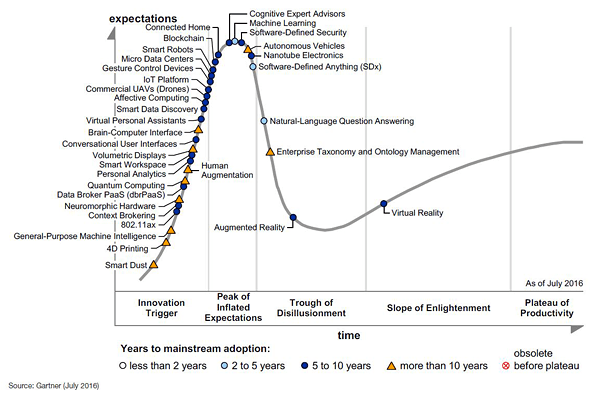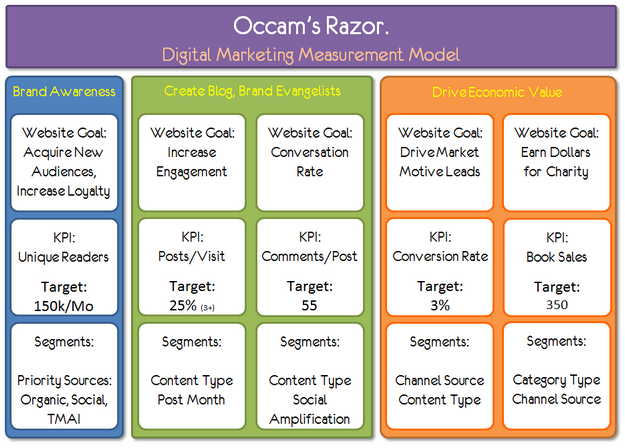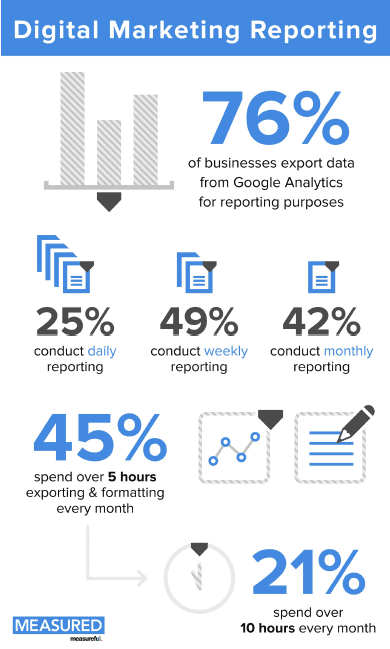Do You Understand the Company's Expectations on Your Digital Marketing Team?
"I now realize that my team and I did the exact contrary of what management expected from us." This could be the post-mortem quote of most digital marketing teams that got downsized or swallowed by another team. Truth is that finding the appropriate positioning for a digital marketing team is hard. Fortunately, this post helps you fulfill the two conditions for leading a new digital marketing team to success:
- Positioning your team appropriately.
- Linking your activity to business results.
Your First Task: Marketing Your Own Team
I remember discussing with the leader of a marketing team from a large European telecom operator. During our exchanges, we identified 7 other teams working on digital marketing topics in this mobile operator company! There were the corporate level teams, the country-level teams, the digital marketing and the traditional marketing teams, split by market: enterprise vs retail vs institutional customers.
This extreme example illustrates how important it is for new marketing leaders to position their team appropriately. Start by doing the marketing of your own team!

You can find below a template team positioning I have used for structuring my teams. It looks ugly but it proved useful in my experience. In this template, you start by documenting your team's purpose in a mission statement. Then you detail the key objectives of the team and its specific added-value versus other teams (your differentiator) for each of the objectives.

It's important that this team positioning document does not stay on your desk: you should validate it with the other teams, with your boss, and with your team members to ensure that you are all aligned. There's nothing more dangerous than having two or more teams eating on the same plate.
Don't Bite The Hand That Feeds Your Team With Work
As a digital marketing executive, you will often have to interact with a marketing team that defines the product positioning. Let's call this other team the "traditional marketing team".
Although digital marketing is a trendy activity, it's likely that within your company, the traditional marketing team is perceived as more legitimate and more business-impacting than the digital team. The reason for this is that everyone understands the role of the traditional marketing teams, ensuring that the company has a product-market fit by defining the marketing plan and the famous 7Ps of marketing.

It is quite common for digital marketing teams to be cornered between several other marketing teams. In that case, the most sensible positioning for a newly created digital marketing team is to support the traditional marketing team. You should try to answer their needs and help them implement the product strategy they have defined.
With time and successes, the influence of your digital marketing team with naturally grow in the organization. You will contribute more and more to the digital part of the marketing plan. You will probably be able to document your digital marketing strategy and present it to top management as part of the brand plans and general marketing plans.
Beware of ego coming too early into the equation: as a newly appointed leader, you will want to prove your value to the company. You may even be tempted to compete with the traditional marketing team on defining the product positioning, pricing, and promotion strategy. That's a confrontational positioning because many organizations expect a newly created digital marketing team to stick to digital aspects, especially in its first months of existence. As B2B companies say: "do not compete with your customers."
If you misunderstand the expectations on your team, you will face unnecessary trouble and conflicts with the traditional marketing team. So do not forget: the traditional marketing guys are the ones who give your team a reason to exist - they need you to implement the multi-channel aspects of their marketing plan. Do not bite the hand that feeds your team with work.
Do You Measure and Communicate the Impact of Digital Marketing on Commercial Results?
A Case Study: Do Not Shoot Yourself in the Foot
The Director of Strategy of a large French company told me last year that he was drastically downsizing their digital marketing team focused on advanced marketing analytics. The team was one and a half years old and had grown aggressively to reach about 45 employees. After the reorganization, they were only 5 people left... You do not want that kind of downsizing to happen to your team, I guess. Moreover, I had met some of the team members and they were talented. I wondered: how can such disaster happen even to a team composed of the best and brightest?
The Director of Strategy detailed to me the reasons for this hard decision. Let's have a look at the three main reasons he mentioned for letting people go.
1. Beyond excitement, your team must deliver revenue-impacting results. The team was active on several of the hottest topics in Gartner's Hype Cycle. That's fair game: as Seth Godin said, "marketing is a contest for people's attention". The positioning on trendy keywords was good to create excitement, and at first, top management was happy with the concepts they presented.But soon enough the team got challenged to present business-impacting results. And when that time came, the team failed to demonstrate their impact on the sales figure. Their added-value became unclear.
2. Having too much budget can hurt. The excitement the team initially managed to generate led the top management to allocate high budgets to scale this department - they inflated to reach a headcount of 45 bright minds through internal and external hires! As you can imagine, other teams got jealous. This increased the scrutiny on the impact the new team had on the business baseline. The digital marketing team started to be perceived as a cost line in the company budget.
3. Their fate was already sealed at this stage. But as if it was not enough they spread their resources inconsistently: their positioning became more and more unreadable.
Taken separately, all these elements are understandable for a newly created team: it takes time to hire and train people, establish the processes, and clarify management expectations. However, the accumulation led the company to let several dozens of talented peoples go.
Money Talks and Everything Else Walks: Your Reporting Must Quantify Digital Marketing Impact on Sales
How do you avoid the pitfalls that could lead your digital marketing team to being downsized? The answer is simple: you need to link your team activity and the company sales. Stated differently, you should communicate on the return-over-investment of your initiatives. A good start point for this is to follow the recommendations of the SmartInsights how-to guide for campaign reporting.
Linking your digital marketing KPIs to sales figures is easier said than done, right? Do not scratch your head too long: you can use the following three-steps method to make your digital marketing analytics actionable, and you will do good.
- Get access to the commercial reporting tools used by your management. Study the KPIs and their presentation. Usually, they will be centered on the number of items sold, the sales figure, and the gross margin, split per customer segment and geography.
- Identify how your digital marketing campaigns impact these KPIs. How did the sales of a given product in a given geography evolve after the brand awareness campaign you created? Can you link the sales bump in Columbia to the numbers of leads gathered through the webinar you created 6 months ago?
- Adjust your digital marketing reporting so that it becomes relevant for top-management. This means focusing your communication on the commercial KPIs that top-management already knows and uses: you have identified these KPIs in step 1.
Of course, the business-linked reporting is just a part of your Digital Marketing and Measurement Model (DMMM). If you are not familiar with the DMMM, you can see an example below from Google's Avinash Kaushik.

The sales linked metrics are only the tip of the iceberg, but that's the part you should rely on the most in your communication with management and with other teams. Internally to your team, you should rely on the classical extended reporting metrics such as the number of views, the number of followers, etc.
There is a good reason why (according to a study by Measureful) 45% of marketers spend more than 5 hours every month exporting and fine tuning their analytics reports. Having clear reports on digital marketing ROI is a condition for the survival of your digital marketing team.

In some companies, you will manage to integrate elements of your marketing analytics KPIs into the commercial reporting dashboards. This is a great opportunity: in such case, the impact of your team work on the financial results should be obvious to the marketing management and the commercial teams.
Don't you think it is more powerful to measure the sales bump after a campaign than to claim you have hired the best SEO expert in town?

Thanks to
Dr. Gilles Bertrand for sharing his advice and opinions in this post. Dr. Gilles Bertrand is a Senior Director of Technical Account Management at one of the hottest big-data analytics startups:
Teralytics. He previously held various business positions in digital innovation for Orange, BuyIn, and other companies in France, Poland, and Germany. Views are his own. You can follow him on
Twitter or connect on
LinkedIn.









 Thanks to
Thanks to 


